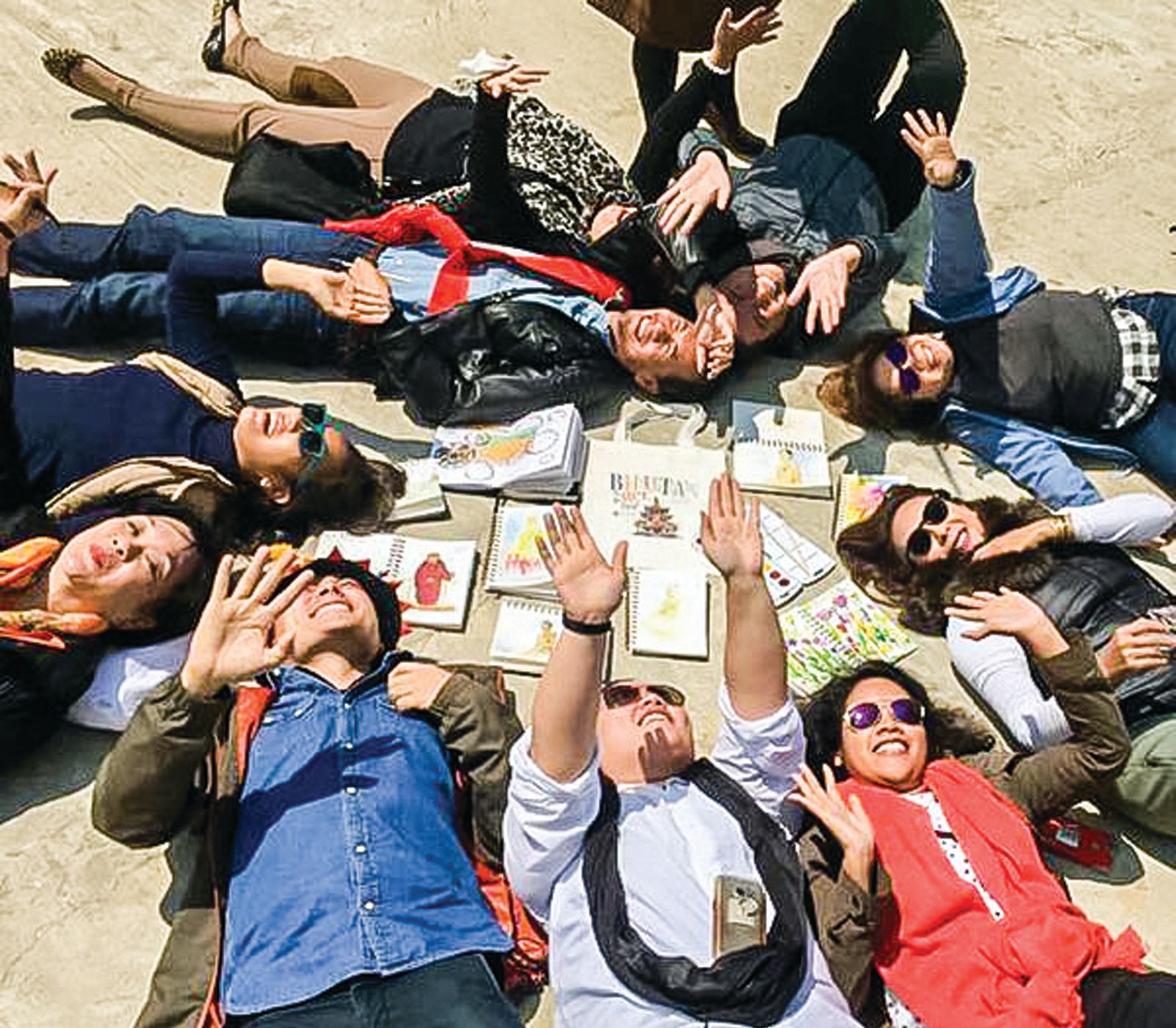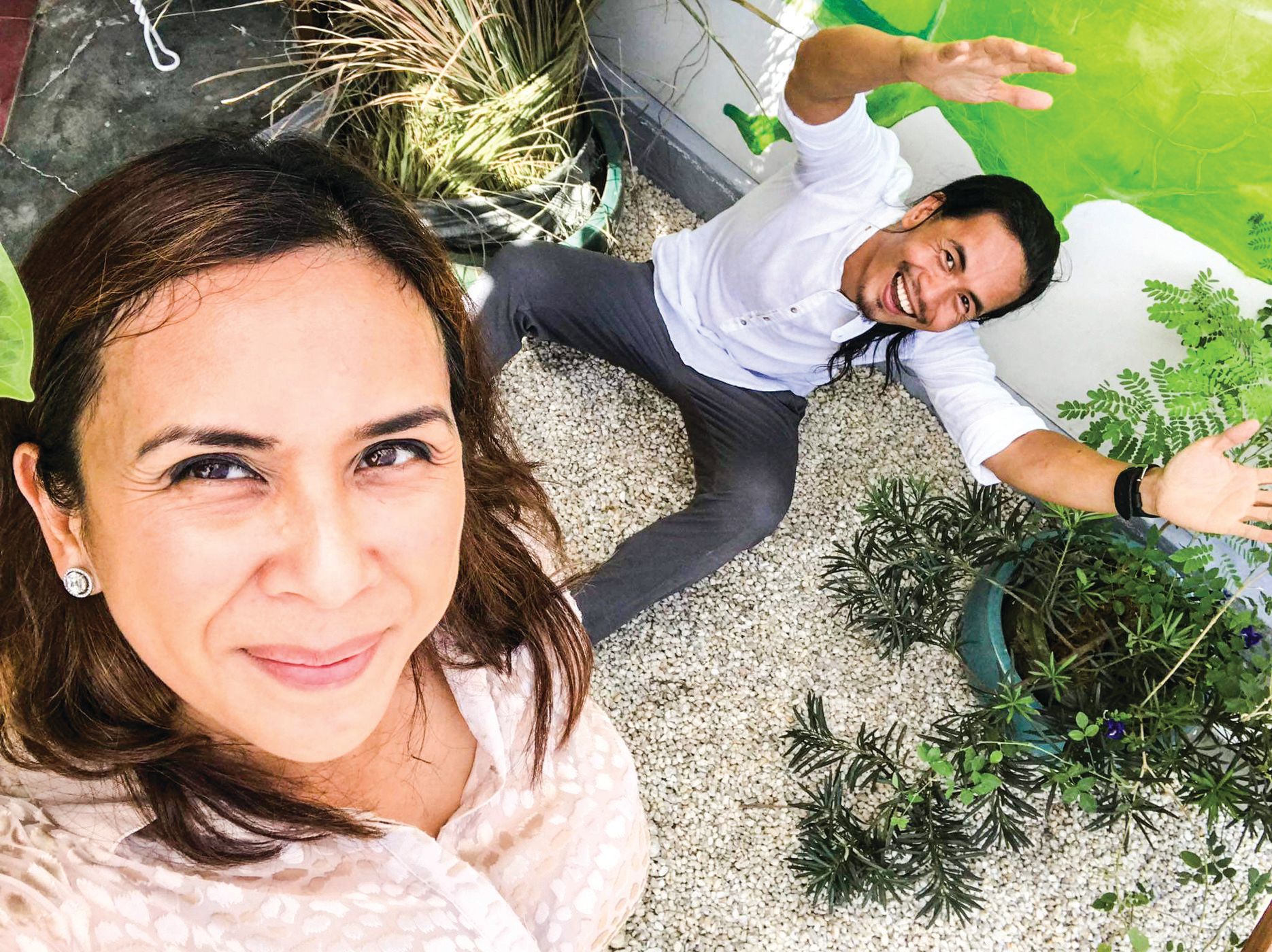Robert Alejandro's healing journey
Nature is the greatest healer
At A Glance
- Robert shared his diagnosis with the group, revealing he wasn't given much time to live. Despite the prognosis, he was determined to live life to the fullest.

I have known Robert Alejandro a few decades now. He was the resident artist at Coke Bolipata’s Casa San Miguel Art Center in Pundaquit, Zambales. He wasn’t part of the Philippine documentary show The Probe Team yet. He was shy yet very talented. I followed his achievements through the years and by chance our paths crossed again a few years ago when I signed up for the Bhutan art tour.
I thought it was an immersive tour of the arts of Bhutan, until I realized the participants were the ones expected to create the art while in Bhutan. Talk about imposter syndrome hitting hard during our predeparture and orientation meet and greet event but Robert assured me it was “ok” (not to be artistically gifted). I didn’t have to be an artist, he said. He had such a nurturing, reassuring air about him so I believed him. After all, this was a chance to visit a place I could only dream about. Besides, at the meet and greet, we all seemed to share the same outlook in life and aesthetic sensibilities.
During that week-long trip, I learned from Robert’s partner Jetro Rafael that Robert had been diagnosed with colon cancer the year before. Robert shared his diagnosis with the group, revealing he wasn’t given much time to live. Despite the prognosis, Robert was determined to live life to the fullest. Jetro was equally determined to change Robert’s lifestyle, encouraging him to eat healthy.
After Robert’s diagnosis, Jetro said he drew from his knowledge in chemistry and did research on cancer—everything he could find to help him pinpoint the best plants, vegetables, and food stuff to incorporate into Robert’s diet. Robert had to drastically change his lifestyle. I asked Robert how he managed, and he said, he had no choice, especially when, “I basically had a death certificate.”
Jetro describes himself as “an accidental chef and artist, and a dedicated health and wellness practitioner.” A chemist by education, he has used his knowledge as a basis to understand the benefits of food on our bodies even to the molecular level. Diagnosed with a psychosocial condition when he was 28 years old and put on medication, Jetro used food and its mood-enhancing and mood-changing effects to help him overcome his mental battles. The meds just didn’t make him feel right but eating the right food did.
One of the highlights of our trip is Jetro preparing freshly picked produce bought from market to enhance our meals. The preparation was really for Robert since he would only eat what Jetro prepared for him. What was prepared for Robert looked so good we couldn’t help ourselves from partaking of it! For instance, Jetro would come to breakfast straight from the market with a bag of vegetables and nuts, and his staple “baons” like Himalayan salt, olive oil, and raw honey. He would whip up the most amazing fresh or raw dishes, all presented beautifully. It was no surprise that everyone in the group urged Jetro and Robert to write a book of recipes. Finally, after many years and the Covid-19 pandemic, Robert and Jetro have come out with a book, Living Well: A Healing Journey, which includes recipes of dishes with healing qualities.

Robert believes his choice to change his lifestyle is just one of the reasons he is still alive. With the help of Jetro, he has been allowed to live the rest of his life on his own terms.
The launch of Living Well:A Healing Journey, was held a few days ago at Jetro’s restaurant Van Gogh is Bipolar on Maginhawa Street, Quezon City. It was a gathering of family and close friends. The tablescapes were amazing, the dishes a feast for the senses. I couldn’t help but notice the added level of curation with a blended scent wafting in the air. Later I was introduced to The Lobotanist Carlo Sumaoang, who was tasked to design the scentscape for the event. The Lobotanist is a purveyor of high-quality products and services that aid in cognitive, intuitive, and spiritual healing, specifically through scented and smolder products like incense and resins. He met Jetro not too long ago.
I asked Carlo about the etymology of The Lobotanist and he explained that it was a wordplay between “lobotomy,” the highlyinvasive psychosurgery prevalent in the late 1800s till the 1980s, and the word “botany,” the study of living organisms. His family runs a high-quality organic fertilizer company and he has branched out to set up an urban agricultural company of his own called MNL Growkits, with the aim of changing the mindset of young people toward farming. A resource person for the Department of Agriculture, he often shares his knowledge on the subject, which keeps him grounded and mindful of his environment.
During the pandemic, Carlo wanted to continue his mindful practice. Looking for something more ritualistic, more visual, more experimental to deepen it, he was brought at first for personal use to the Wanchako Palo Santo incense. A wild tree found in the Yucatan Peninsula in Peru and Venezuel, Palo Santo is said to “keep energies grounded and clear” and to attract “positive energy while clearing away negative energies and restoring environmental balance.”
Carlo soon gained enough knowledge to distinguish high quality Palo Santo from the rest. He found a source in Peru that not just looked at incense as a product but as medicine.
The Wanchako company in Peru also ensures that they only collect from dead Palo Santo trees to maintain sustainability. Carlo has reached out to other suppliers all over the world who share the same corporate vision to source his scented and smolder products from.
When asked what scent he used for the book launch, Carlo revealed that it was a specific blend of camphor, spices, florals, sandalwood, star anise, and cloves, which he designed after speaking with Jetro. He incorporated the vibe Jetro wanted and chose scents with the corresponding frequency. Yes! Scents have frequencies.
Different types of incense are believed to generate specific vibrational frequencies that have varying effects. The Lobotanist has an Incense Library with categorized scent types like woody, floral, amber, marine, and herbaceous. Each affects energies, moods, and frequencies. “For example, lavender is scientifically proven to calm the body, making it ideal for bedtime,” said Carlo. “Creamy scents manage anxiety, woody scents like cedar and sandalwood aid in mental clarity, and floral scents inspire creativity.”
Carlo and his team are also exploring intuitive and energetic uses of incense, woods, and pure aromatics. Sharp, lemony, camphoric, minty, and medicinal scents have strong cleansing properties and can mobilize stagnant energies. Woody and nature-mimicking scents offer protection for oneself and spaces. Grounding and brooding scents like oud and sandalwood harmonize internal and external energies while floral scents invigorate spaces when energy needs vibrance.
“I think what rituals, traditions, and ancient teachings like meditation, burning incense, and breathwork provide us is the space to pause, reflect, and introspect,” says Carlo. These mindfulness exercises allow us to silence the mind and ultimately remember—not learn—who we truly are. We are vessels of kindness, love, gratefulness, and trust. They offer the opportunity to glimpse our core selves before heartaches, traumas, failures, sufferings, programming, and the whole human experience take over. By pausing and silently asking questions like ‘How am I?’ ‘Why did I react that way?’ ‘Why am I anxious?’ ‘How do I feel?’ and ‘How do I continue my journey?’ we learn more about ourselves in these moments of presence.”
All these are part of the core belief of New Age spirituality, which is a holistic, interconnected way of viewing the universe and one’s place in it. In essence, the aim is to achieve a higher consciousness and personal growth by attuning oneself to the natural energies and divine forces present throughout the universe.
As a side bar, it will be Ghost Month soon (Aug. 4 -Sept. 2). This is the time spirits are said to visit the living. It is an Asian tradition when people pay respect to ancestors and acknowledge the divine. It is also a time to cleanse and protect our homes. Carlo’s advice is to burn cleansing incense sticks and resins like camphor, frankincense, and benzoin. Woody scents are ideal too, as they have excellent cleansing properties. For those seeking protection and a sense of calm, woody and grounding scents are highly recommended.
“By incorporating these practices into your daily routine during Ghost Month, you can create a harmonious and protected environment,” says Carlo.